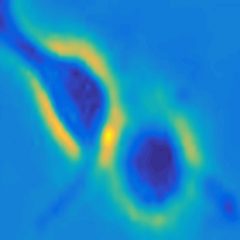Big changes in v1.2.4. Enhancements to multi-resolution segmentation, and to mitotic detection.
Author: ac
V1.1.14 — new texture segmentation
the new Texture2D will now fuse multiple fluorescent (or one phase and multiple fluorescent) channels. Put the phase channel first in the channel list. New partitioning tricks, enhanced performance, and a few bug fixes for good measure. Lots of changes, so let me know how it works out!
This segmentation should work in 3-D as well, and may be a good update to the 3-D Otsu that’s currently in there. More on that soon…
v1.1.12
new segmentations — the texture and log are both using the new recursive log partitioning strategy. it’s slow, but it rocks.
many bug fixes too…you definitely need to upgrade to this v1.1.12 no matter what version you’re running.
enjoy!
mac support! v1.1.8
v1.1.8 includes a mac installer (DMG) available at https://leverjs.net/download. there is also a new ui for the experiment window, and some new segmentations.
although electron/node.js is a cross platform solution, there were a number of subtle differences (path handling especially) that had to be worked out. this release includes both the installer, and prebuilt mac executables for the import, segmentation and tracking modules. all available at https://leverjs.net/git.
lever.js is still unreleased software…this website is intended for collaborators and reviewers…please contact andy if you want more info on collaborating on lever.js for your project…
v 1.1.5 drops today
highlights:
- new generic intensity and texture segmentations: use the texture for transmitted light, the intensity for fluorescence. much improved.
- multi-select cells with ctrl+click. then right click to merge.
- excel stats generation — server/stats. it’s slow to generate (e.g. 30 seconds for 200 movies with a few hundred cells per), and there’s no ui progress indicator (yet -:( sorry ). it’s a useful feature that will continue to be improved
let me know how it works!
-andyrcohen @ outlook.com
v1.1.0 available
key change — git’s LFS (large file system) for storing the prebuilt/* binaries. in the long run this will keep the repo more manageable by not forcing inclusion of every binary in the history. sad i didn’t think to do this sooner, but better late than never…
other changes include improved editing capabilities — tracking on splits, and tracking for manual edits are both big bug fixes. there’s still a subtle lurking case where a manual edit might not be respected properly, that fix will come in a future check in (pretty rare though).
this is still a pre-release evaluation only.
new gitlab repo
the old lever.js gitlab repo was put in the archives — checking in the binaries was taking way too much room and the repo was getting HUGE. As an interim step, I added a ‘prebuilt’ and ‘bin’ folder structure. ‘prebuilt’ is part of the repo, ‘bin’ is not (it’s ignored). Binaries go into ‘bin’ folder. lever.js checks ‘bin’ first, and then ‘prebuilt’. when built versions are ready for general release, they get copied to prebuilt and checked in. Longer term solution will be to transition to git’s large files. It’s built into gitlab now, but client support is spotty.
Download / install the software…create an account…if you find any bugs or missing features please open an issue….
lever.js: the new new
lever.js will be a complete rewrite of the lever software
same algorithms
different infrastructure
